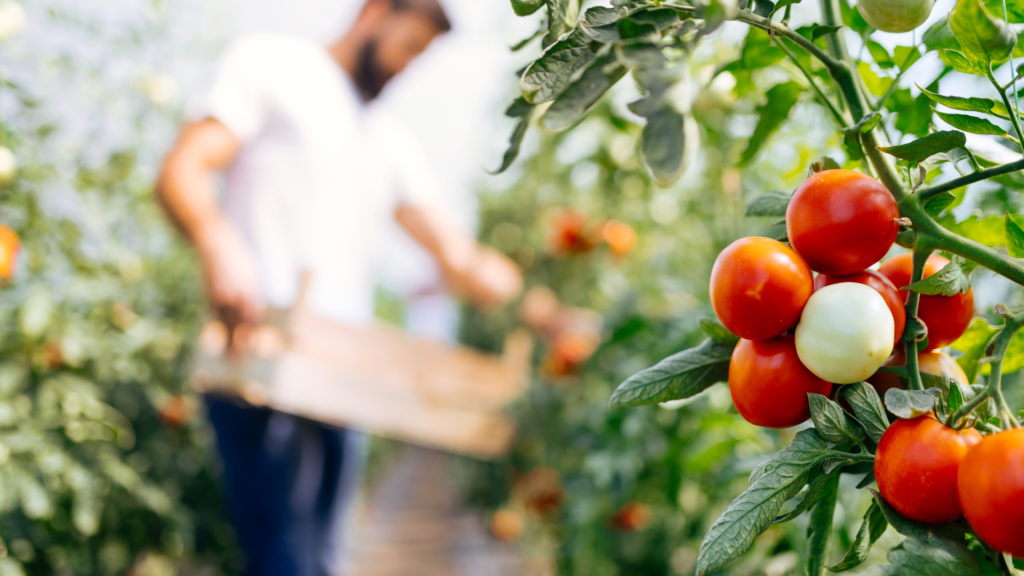Shipping Container Greenhouses: How They Work and Why You Should Have One
Modern farming has a big problem. Researchers estimate that, by 2050, there will be a 66% drop in arable land around the world. For a population that might hit 9.7 billion by that year, feeding those hungry mouths will be challenging. One clever solution is using shipping container greenhouses to grow crops.
Shipping container farms are becoming a popular way to add year-round growing capability to traditional farming and grow crops on a small footprint. If you are curious about how vertical growing containers work, read on!
If you are looking to add a shipping container greenhouse to your farm or getting into shipping container farming as a new business, Rent-A-Container is here to help. Contact us today to explore your options with a qualified team member.

How Shipping Container Greenhouses Work
Every shipping container greenhouse starts with the container itself. Options to buy or lease containers give potential indoor farmers flexibility when starting out. Different styles provide additional choices that can fit into any farm footprint.
Containers are then outfitted with some impressive technology to maintain optimum growing conditions. Container farms use controlled environment agriculture (CEA). CEA systems monitor a selection of environmental inputs to create a year-round paradise for plants.
They do this by monitoring:
- Temperature
- Humidity
- Carbon dioxide
- Light
- Nutrients
A computer system tracks these levels and adjusts them when needed. You can even control most systems remotely through a smartphone. This high-tech approach to growing food packs in plants and can fit virtually anywhere.
Indoor Farming Container Layout
When developing a layout for your shipping container farm, utilizing the vertical space is key. This advantage gives containers another edge when competing against traditional farms.
Vertical farming uses stacked layers of plant trays. Combined with CEA automation, vertical farming helps utilize growing space while providing a relatively hands-off growing experience.
This has made shipping container greenhouses alluring to entrepreneurs and seasoned farmers alike.
Stacking Vertical Growing Containers
Taking the idea of vertical even further, you can stack vertical growing containers on one another. Because manufacturers build shipping containers with vertical storage in mind, farmers can create one-of-a-kind custom farms as high as the sky.
Savvy shoppers planning a vertical growing empire might even buy in bulk to save on capital. From there, building up is all a matter of joining two containers together.
Benefits of Shipping Container Greenhouses
Shipping container greenhouse systems have some unique benefits. They offer farmers a year-round growing season and the ability to control variables for taste, and they provide hyper-local produce to communities.
Hydroponic shipping container farms can offer a lot more, too. Let’s take a look at some stand-out benefits of practicing CEA with shipping container greenhouses.
Hydroponic Shipping Containers Grow Food in Urban Areas
The U.S. Department of Agriculture estimates that around 23 million people in the U.S. live in food deserts. Indoor shipping containers bridge the gap between farmers and their communities, offering a much-needed source of fresh food.
In cities where space is at a premium, a thirst for sustainable agriculture has brought shipping container greenhouses to urban areas. This brings people closer to their food and removes some of the major environmental costs of traditional farming.
Your Shipping Container Greenhouse Is Earth-Friendly
Using a shipping container garden means cutting transaction costs. These are the overall costs of producing and transporting a product, including the environmental impact.
While a head of lettuce might seem benign, it could have taken a very long journey to get to your store shelf. Freight transport accounts for 7% of global greenhouse gas emissions. Shipping containers cut these environmental costs right out of the production cycle.
Additionally, most hydroponic shipping container farms operate with a closed-loop system. This means water is recycled, conserving this precious resource.
Controlled Conditions in Shipping Container Farms
A properly insulated and well-equipped shipping container greenhouse can grow fresh produce in the most extreme conditions. Combine that with sensors that feed vitals to a hydroponic system, and you have an environment that can grow food year-round.
Thanks to nutrients and proper lighting, you can reproduce almost any growing environment in a shipping container. Working with automated systems can even take out the guesswork when measuring nutrients and timing lighting cycles.
Curious about other unique uses for shipping containers? Learn Why Restaurants Are Utilizing Shipping Containers [+ 9 Container Drive-Thru Examples to Make You Envious]
Grow Your Shipping Container Garden with Rent-A-Container
Shipping container greenhouses are here to stay. This convenient and revolutionary approach to indoor farming has become a hot trend in modern agriculture.
To get into the game, you’ll need to find the right shipping container, and Rent-A-Container has the selection of containers you need. Give us a call at 800-880-7061 or reach out to us online to find the perfect indoor farming container.


